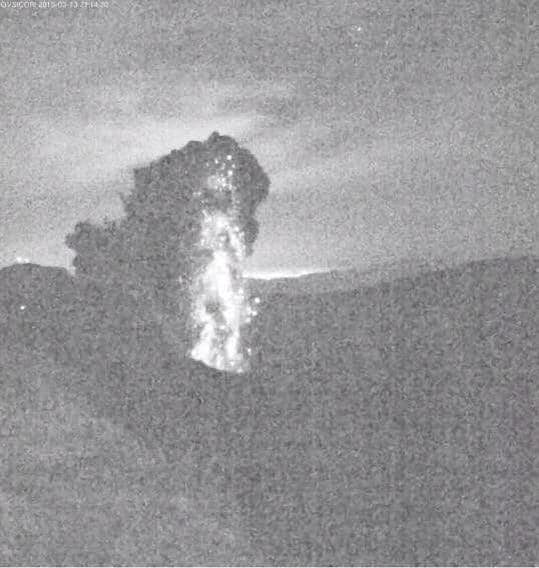https://www.facebook.com/video.php?v=809832475720679&set=vb.106757629361504&type=2&theater
UPDATE: 10:30 a.m. Sat., March 14
Volcanologists believe the incandescent material seen last night spewing from Turrialba Volanco was not lava but rather chunks of rock heated to extremely high temperatures.
María Martínez Cruz, volcanologist with the Volcanological and Seismological Observatory of Costa Rica (OVSICORI), said Saturday that the majority of rock ejected from the volcano on Friday fell back into the crater, but some has fallen on the volcano’s flanks.
She said eruptions Friday morning produced material as big as 1 meter in diameter.
Ash filled the air downwind of the volcano, particularly around Heredia, on Saturday morning.
Volcanic ash can aggravate respiratory problems and, occasionally, cause skin irritation. OVSICORI circulated a guide Saturday to the health hazards of volcanic ash. The guide, published by the U.S. Geological Survey and other institutions, is available in English here.
Original story continues here:
Nighttime images from a live video camera operated by the Volcanological and Seismological Observatory of Costa Rica (OVSICORI) at the Turrialba Volcano are showing an incandescent glow, meaning lava or other incandescent material is present in the volcano’s eruptions.
The volcano, located about 70 kilometers northeast of San José, has been exploding nearly nonstop since Thursday, covering vast areas of Costa Rica’s Central Valley in volcanic ash. Scientists have been working to determine the exact nature of the eruptions, and whether or not lava is present.
The above image was taken just before 10 p.m. on Friday night. According to OVSICORI, the latest eruption began at 8:55 p.m. Volcanologists are monitoring the situation and expected to weigh in soon. Stay tuned.
Meanwhile, watch the volcano here.






